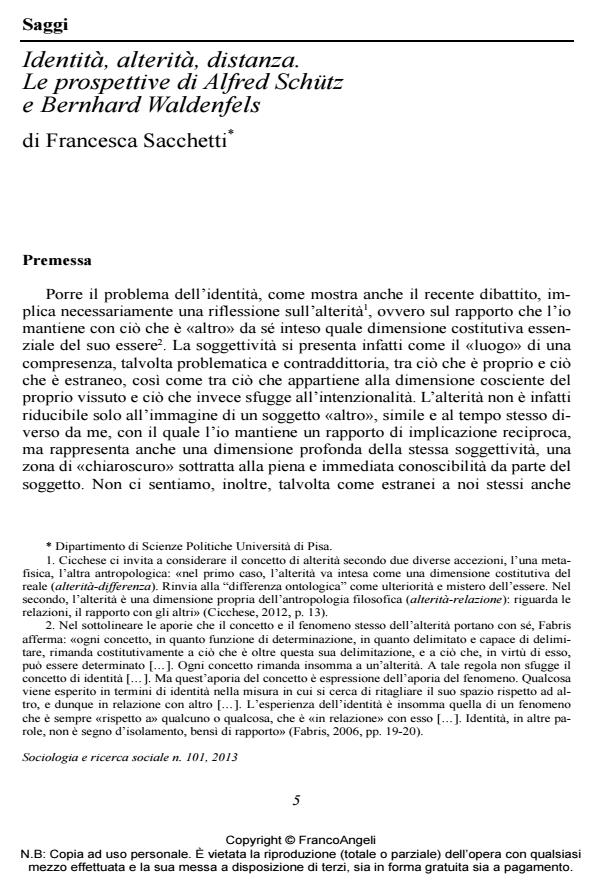Identity, Otherness, and Distance. Perspectives of Alfred Schütz and Bernhard Waldenfels
Journal title SOCIOLOGIA E RICERCA SOCIALE
Author/s Francesca Sacchetti
Publishing Year 2014 Issue 2013/101
Language Italian Pages 38 P. 5-42 File size 748 KB
DOI 10.3280/SR2013-101001
DOI is like a bar code for intellectual property: to have more infomation
click here
Below, you can see the article first page
If you want to buy this article in PDF format, you can do it, following the instructions to buy download credits

FrancoAngeli is member of Publishers International Linking Association, Inc (PILA), a not-for-profit association which run the CrossRef service enabling links to and from online scholarly content.
The essay focuses on a relational concept of identity that implies as its essential constitutive moment the confrontation between «self» and «other». Alfred Schütz’s reflection on the theme of social personality revolves around the idea according to which the self presents «from the beginning» a naturally ascribed social dimension: the construction and sharing of a common sense necessarily implies a comparison with the other, in this context understood essentially as alter ego. The idea of «radical otherness» developed by Bernhard Waldenfels indicates that «identity», and «experience» in general, is constitutively marked by a «gray area» not attributable either to the sphere of «self» nor that of «other». The other is configured as a presence-absence which asks the «self» for acknowledgement and acceptance, implying thus a «practical» dimension of our being rooted in the world along with other individuals as the original form of the self-other relationship.
Francesca Sacchetti, Identità, alterità, distanza. Le prospettive di Alfred Schütz e Bernhard Waldenfels in "SOCIOLOGIA E RICERCA SOCIALE " 101/2013, pp 5-42, DOI: 10.3280/SR2013-101001